- Benefits of Working at Te Whatu Ora
- Allied Health and Support
- Current Vacancies
- Useful Links
-
Nursing & Midwifery
- Application Process
- Benefits
- Midwifery
- New Graduate Nurse Programmes
- Nurse Practitioners in Northland
- Nursing Bureau
- Post Graduate Education
- Professional Development Recognition Programme (PDRP)
- Registration & Immigration Process
- Return to Nursing Programme
- Nursing Recruitment
- Te Tai Tokerau Nursing Conference 2023
- Resident Medical Officers
- Senior Medical Officers
-
Services for Primary Care
-
Advance Care Planning
- Healthcare Practitioner FAQs
- Advance Care Planning in Northland
- He Waka Kakarauri
- Shared Goals of Care (SGoC)
- Serious Illness Conversation Guide
- Whānau Tahi in Northland
- Te Ara Whakapiri: Principles and guidance for the last days of life
- Brochures, Booklets, Documents and Resources
- Legal Framework for Medical Decision-Making
-
Advance Care Planning
-
Staff Login
- Working from Home Support
- Access Your Email
- Access the network remotely (Citrix)
- Yourself
- SMO CME Applications
- SMO CME Approvers
- Yourself Guides
- Zoom Videoconferencing
- Learn
- Occupational Health
- Covid Immunisation Register - CIR
- Maternity Opportunities For Improvement
- Access the Network Remotely - MFA
- Northern Region IT Services Portal
- Holidays Act Remediation Portal - For Former Employees
- Kia Ora Hauora
- Research Office
People & Population
Northland’s estimated population in 2012 is 159,160, 3.6% of New Zealand’s population. Māori comprise around 32% of the Northland population. Northland’s population is ‘ageing’ because older age groups are increasing in both number and proportion, while those of children and youth are decreasing because of declining birth rates. Significant change in the age structure of the Northland is projected between 2012 and 2026.
Northland’s only true urban area is Whangarei, which contains about one-third of its population. The remainder live in small towns (the largest of which are Kaitaia, Kerikeri, Kaikohe and Dargaville at about five thousand each) and rural areas across the district. Many of these are isolated; it takes over 5 hours to travel from Northland’s northern to southern extremities and up to 2 hours west to east.
Life expectancy for all Northlanders is lower than national averages, with life expectancy for Māori in Northland lower than that of non-Māori as too compared with the national Māori population figures. The health risk factors for the population in Northland are: tobacco use, nutrition, physical activity, alcohol use and diabetes, cardio vascular disease and cancer.
Last modified:
- Benefits of Working at Te Whatu Ora
- Allied Health and Support
- Current Vacancies
- Useful Links
-
Nursing & Midwifery
- Application Process
- Benefits
- Midwifery
- New Graduate Nurse Programmes
- Nurse Practitioners in Northland
- Nursing Bureau
- Post Graduate Education
- Professional Development Recognition Programme (PDRP)
- Registration & Immigration Process
- Return to Nursing Programme
- Nursing Recruitment
- Te Tai Tokerau Nursing Conference 2023
- Resident Medical Officers
- Senior Medical Officers
-
Services for Primary Care
-
Advance Care Planning
- Healthcare Practitioner FAQs
- Advance Care Planning in Northland
- He Waka Kakarauri
- Shared Goals of Care (SGoC)
- Serious Illness Conversation Guide
- Whānau Tahi in Northland
- Te Ara Whakapiri: Principles and guidance for the last days of life
- Brochures, Booklets, Documents and Resources
- Legal Framework for Medical Decision-Making
-
Advance Care Planning
-
Staff Login
- Working from Home Support
- Access Your Email
- Access the network remotely (Citrix)
- Yourself
- SMO CME Applications
- SMO CME Approvers
- Yourself Guides
- Zoom Videoconferencing
- Learn
- Occupational Health
- Covid Immunisation Register - CIR
- Maternity Opportunities For Improvement
- Access the Network Remotely - MFA
- Northern Region IT Services Portal
- Holidays Act Remediation Portal - For Former Employees
- Kia Ora Hauora
- Research Office
